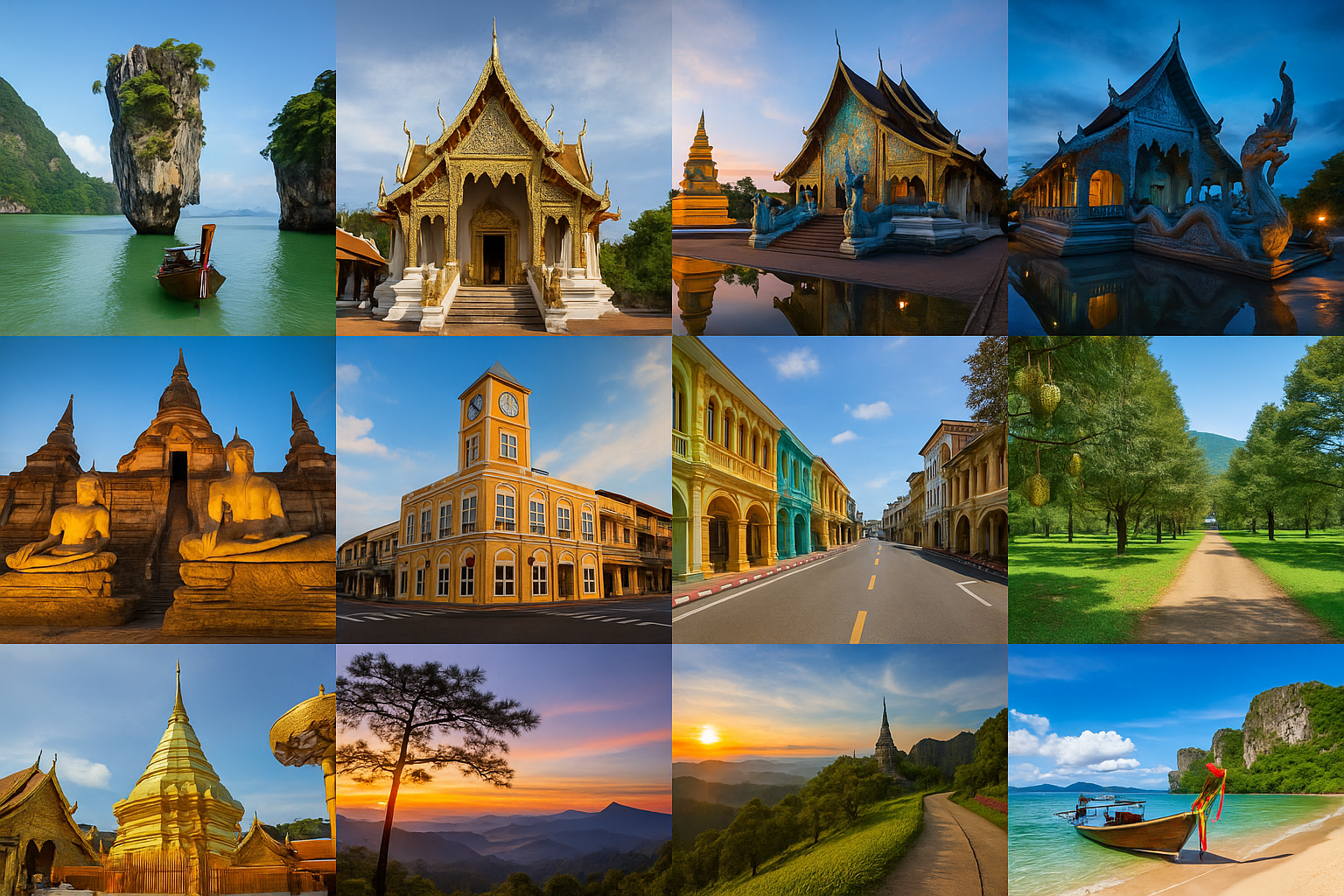🌏 Top 10 Travel Destinations in Thailand for 2025 Discover the most popular provinces among local and international travelers in 2025, featuring highlights and must-visit places in each location. 1. Chiang Mai – The Cultural Heart of Northern Thailand A perfect blend of ancient heritage and modern creativity, Chiang Mai attracts travelers of all types. From misty mountains to bustling night markets and hip cafes, it offers endless charm. Doi Inthanon National Park Wat Phra That Doi Suthep Nimmanhaemin Road Mon Jam Royal Park Rajapruek Chiang Mai Night Safari Baan Mae Kampong 2. Phuket – The Ultimate Tropical Island Phuket combines stunning beaches, vibrant nightlife, cultural heritage, and luxury resorts. It’s suitable for couples, families, and backpackers alike. Patong Beach Promthep Cape Old Phuket Town Koh Khai Nai Yang Beach Wat Chalong Romanee Street 3. Bangkok – The City of Angels Thailand’s vibrant capital is an energetic hub of temples, street food, riverside malls, and cultural fusion. Ideal for city explorers and foodies. Grand Palace Wat Phra Kaew Wat Pho Yaowarat (Chinatown) Chatuchak Market ICONSIAM Asiatique The Riverfront 4. Krabi – Emerald Seas and Limestone Cliffs Perfect for nature lovers and adventure seekers. Krabi is known for its turquoise waters, white sandy beaches, and world-famous island hopping. Railay Beach Thale Waek (Separated Sea) Koh Hong Emerald Pool Klong Thom Hot Springs Tiger Cave Temple Koh Poda 5. Sukhothai – The Birthplace of Thai Civilization This UNESCO World Heritage city offers a glimpse into Thailand’s glorious past with ancient temples and serene surroundings for history buffs. Sukhothai Historical Park Wat Si Chum Wat Mahathat Ramkhamhaeng National Museum Baan Na Ton Chan Loy Krathong Festival (Candlelight Celebration) 6. Chiang Rai – The Northern Art Capital Chiang Rai is known for contemporary art, spiritual architecture, and serene mountain scenery. Great for peaceful retreats
Read More





